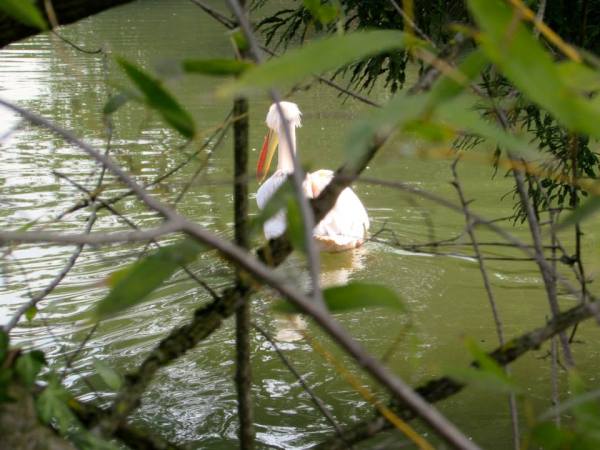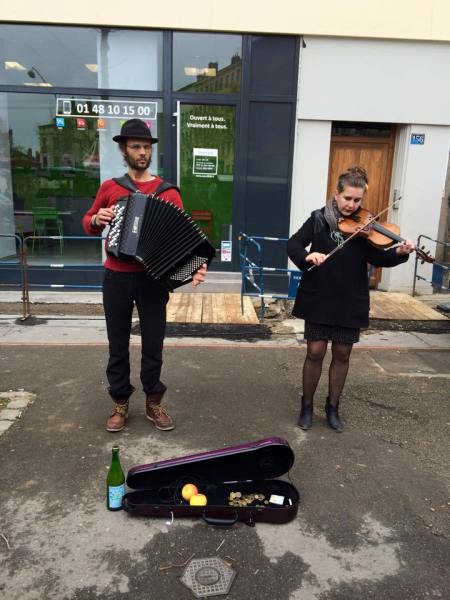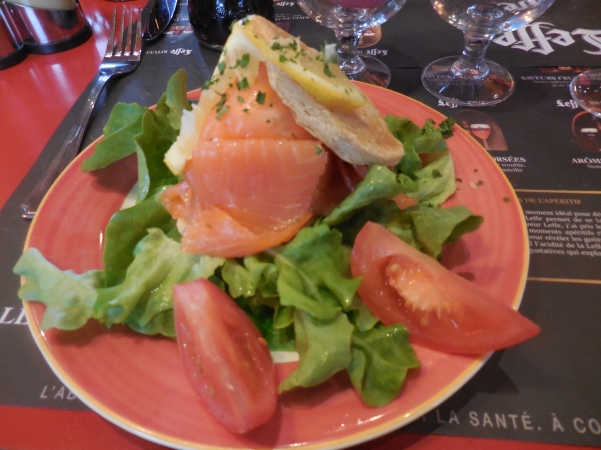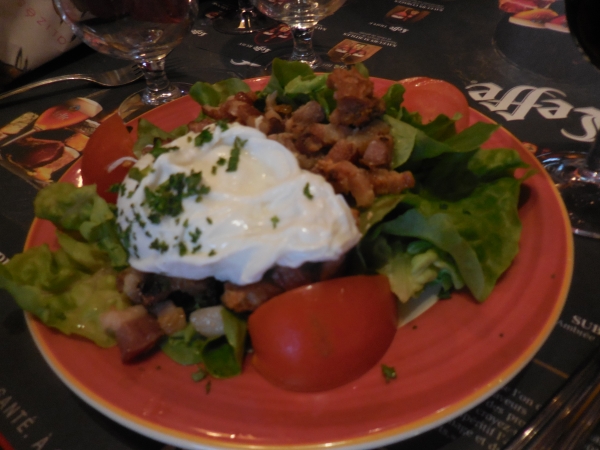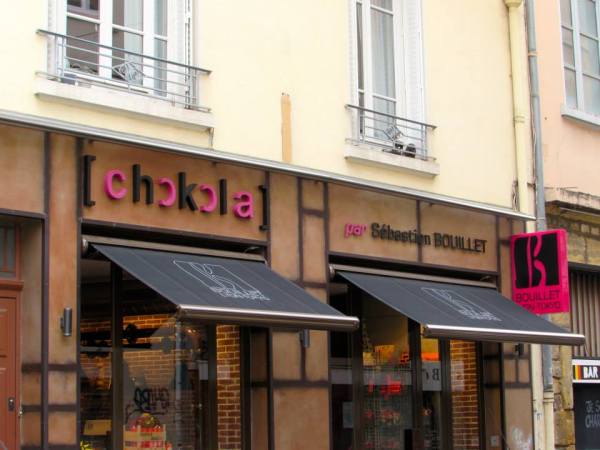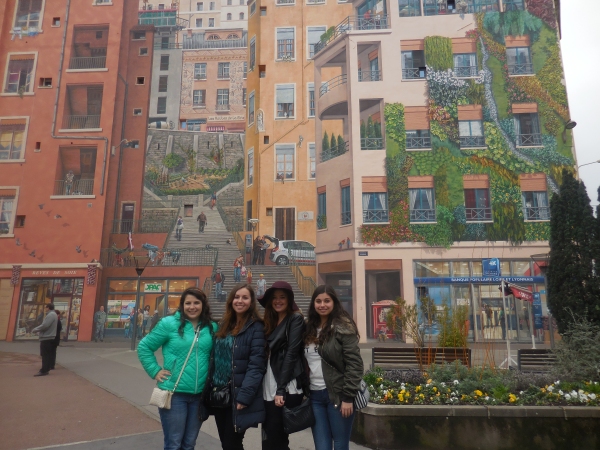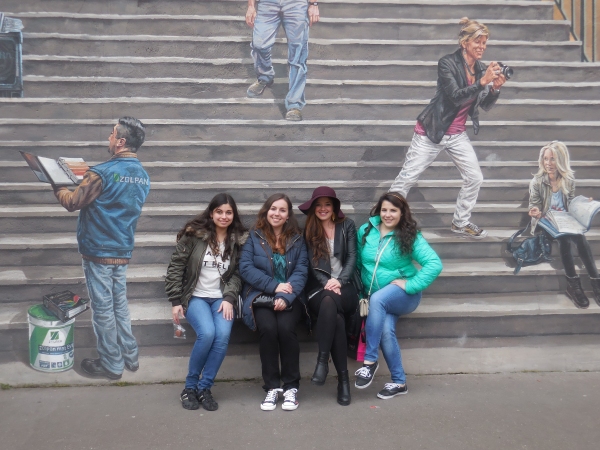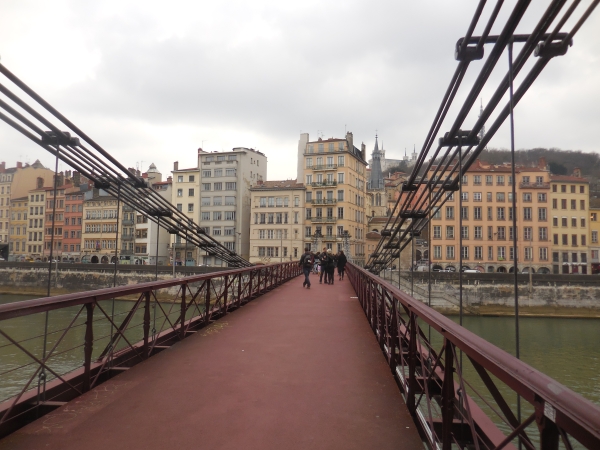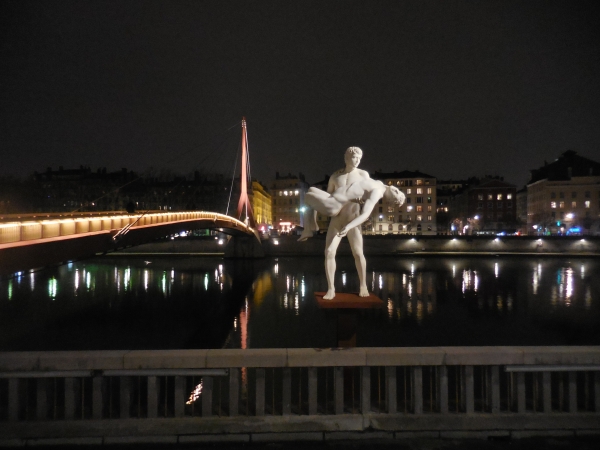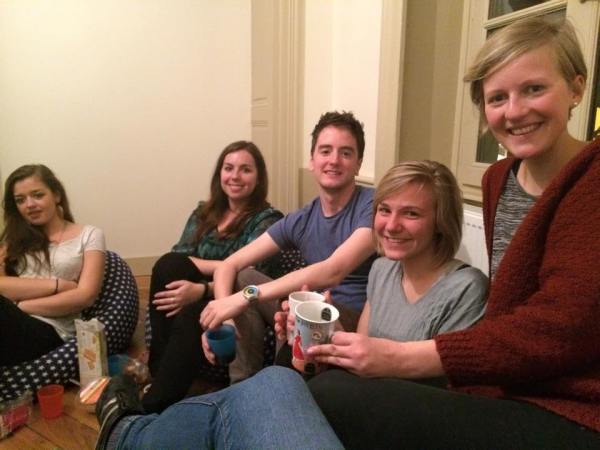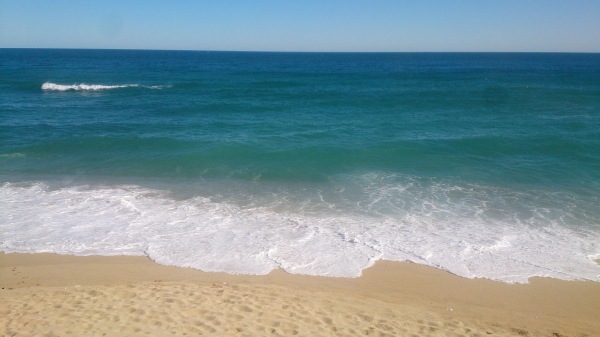I’m going on my second year living in beautiful Barcelona, obviously because I love it enough to stay. However, as any expatriate knows, there are certain cultural differences that you just have to get used to. Some are only slightly different than your own customs, and others catch you completely by surprise. There were some differences that I expected: obviously there would be different food (and I was super excited for it, the Mediterranean is world-renowned for it’s delicious and healthy food), the bars and clubs would be open later than in America (because the Spanish infamously party until sunrise), etc. But there were some things that most people just don’t associate with Catalan or Spanish people.
1. They are obsessed with pasta and pizza.
Who isn’t though, right? But this is no joke. Sure, I had my fair share of pizza and pasta back in the states, but people LOVE it here. When I first arrived last year and moved in with my host family, they served a big plate of pasta for lunch. When I moved back to Catalonia last month and moved in with a different host family, what did they serve for the first meal? Pasta, of course.

Pasta Carbonara (Photo Cred: fotom.xyz)

Macaronis
And they really only have 2 varieties: “Macaronis” (normal rigatoni type noodles or the swirly kind) and Spaghetti Carbonara (white sauce with bacon). It isn’t common for families to use any other type of sauce, let alone order it in a restaurant. When they take their kids out for lunch and dinner, what do they order? Macaronis or Carbonara. Seriously. I don´t know about you, but when I thought of Spanish/Catalan culture, I did not expect that.

Cannellonis (Photo Cred: http://www.johnsonville.com)
They also have another variety of pasta that they call “Cannellonis.” It is basically lasagna noodles rolled enchilada style, stuffed with meat and cheese, and covered with a white sauce (bechamel) and more cheese.
Sounds super healthy, right? Like what you envisioned of a Mediterranean diet?
2. They eat sandwiches almost every day, but refuse to add more than one ingredient.
I know, I know… when you think of Spanish/Catalan culture, you automatically think of sandwiches. Oh, no? You never associated it with sandwiches? You’re not alone. I work in a school, and also live with a host family. I see what the kids and even parents eat every day. And honest to God, it is sandwiches all the time. For breakfast? Sure, why not. For their ‘second breakfast’? (see #3 below) Of course! For their afternoon snack? Well duh, what else could you possibly eat?

Bocata de Jamon aka Ham Sandwich (Photo Cred: http://www.20minutos.es)
But what gets me the most is what they put inside of their sandwiches. Back home in America, we eat sandwiches decently often as well. But for lunch. Or sometimes if we’re lazy, dinner. Or if you really want to get crazy, for breakfast. But we put meat, cheese, condiments, vegetables, etc… the only limit is your imagination. There is an art to sandwich making.

Bocata amb Formatge aka Cheese Sandwich
Here? Meat. Or cheese. Both? Oh, heavens no! What kind of a heathen are you?! And they don’t even add a lot of meat or cheese, either. They buy their bread fresh in the mornings, sometimes smother a little bit of oil and tomato on the insides of the bread in the typical “pa amb tomaquet” style, and then add a single layer of meat or cheese. And ya está. For a person like me who isn’t a big fan of bread, it is a tiny nightmare. The bread is often quite tough, so you really have to gnaw on the bread in an animal-like fashion to eat this thing. And your reward? A mouthful of bread with just the tiniest of hints of meat or cheese. Yum.

Pa Amb Tomaquet aka Bread with Tomato (Photo Cred: cadenaser.com)
On one of my first days with my current host family, I was making my sandwich for my second breakfast later (like a good Catalan girl) and they were showing me where the meat and cheese was. I decided to have sobresada (a red meat & spice spread, also a strange thing for expats), and then I went back to the fridge and asked where the cheese was. The host father looked at me in confusion.

Sobresada (Photo Cred: pequgourmet.com)
Him: “But, you have sobresada. Do you want another sandwich?”
Me: “Oh, no. I was just going to add cheese to this one.”
His face was priceless.
3. They eat more than you can imagine, yet somehow stay skinny.
As an American, you know that the world looks at you as if you eat hamburgers and fries every day. As an American moving to Barcelona, I was expecting to lose 20 pounds the first couple of months and eat fresh meats and vegetables every day. Boy, was I mistaken…
A typical day in the life of a Catalan:
- 7am – 9am: Breakfast, most commonly cereal, bread, meat, cookies, etc (never eggs).

Their idea of cookies, suitable for breakfast, second breakfast, afternoon snack, or dessert. (Photo Cred: http://www.lauravivet.com)
- 10am – 11am: ‘Second Breakfast,’ as if one isn’t enough. Most commonly a plain sandwich of some sort (see #2) or fruit. But usually a sandwich.

Arroz a la Cubana, a popular dish for lunch. (Photo Cred: http://www.fiesta1037.fm)
- 1pm – 3pm: Lunch, often consisting of 2-3 courses. And with giant portions that put Americans to shame. Common first courses: soup, pasta, boiled potatoes and peas, lentils with chorizo, garbanzo beans, rice, etc. Common second courses: salad, meat, french fries, rice, another type of pasta… And on top of all of this, a dessert. It is extremely common to have something for dessert after both lunch and dinner. Common desserts: yogurt (never for breakfast), fruit, cookies, ice cream.

Carne Rebozada aka Fried and Breaded Meat, another very popular item for lunch and dinner. Often accompanied by French Fries in a restaurant, like any other meat unless you specifically ask for salad. They’re not much for side dishes in Catalunya(Photo Cred: realworldmeetsgirl.wordpress.com)
- 5pm – 7pm: Snack, usually more cookies, a mini sandwich, or in some cases, yogurt or fruit. Bakeries are also an extremely popular stop after school, to grab some croissants, ensaimadas, or anything with chocolate. So much sugar!

An ensaimada, basically a puff pastry with powdered sugar.
- 9pm – 11pm: Dinner, also 2-3 courses. Very similar to lunch, but often just slightly lighter since they eat right before going to bed. They always have a dessert, and I noticed this happens even if the kids are “too full” to finish their dinner.

Photo Cred: http://www.800.cl
OH, and I forgot to mention that they eat bread with everything. So in addition to the sandwiches they always have, they eat sliced french bread with both lunch and dinner as if it’s candy. They can even eat it plain for a snack. Silly Americans, thinking that bread makes you fat…
4. They can NOT handle spicy food. Like, at all.
The Catalan and Spanish people don’t like to add a lot of spice to their food, and that includes pretty much everything except salt, pepper, and oregano. They pride themselves on buying their food fresh, sometimes every single day. Texture is also very important to them. In some ways, I like this a lot. But in others, some of the food is just incredibly bland. For instance, it is quite common, especially during the fall and winter months, to make a puree of fresh vegetables. I really enjoy this in fact, and it is super healthy. They make it from pumpkin, zucchini, carrots, etc. The pumpkin one especially is incredibly rich in flavor, I love it. However, last year one of my host families made a puree of spinach. Now, normally I adore spinach. But it was my first encounter with it in this form, and without salt. It made me gag.

From my Mexican fiesta, including fajitas, enchiladas, guacamole, salsa and rice.
Anyways, I happened to mention to my first two host families that mexican food is my absolute favorite food, and that I make a meannnnn guacamole. So they decided to put me to the test, and gathered a bunch of their friends together to try out my mexican cooking (see how it went here). I tried to make everything super mild, because I had noticed they never eat anything spicy. But even with this, the moment they put a bite of my enchiladas into their mouths they exclaimed in horror “Pica! Pica! Pica!” No joke.
Of course, there are exceptions to the rule. But very few. One of my friend’s husbands is obsessed with spicy food, and even grows a garden of various peppers. But good luck even trying to find a jalepeno in the grocery store.
5. Water is often more expensive than beer and wine.

In America, water is free at almost every restaurant you go to. I am pretty sure it is illegal not to serve someone water from the tap if you ask for it. However, here in Catalonia and Spain (along with most places in Europe, I think) they charge you extra for water. And often they expect you to buy their expensive, fancy glass bottles of water. Whereas, on the other hand, you can get a glass of wine or a beer for between 1-3 euros. But hey, that’s okay with me… wine it is! No wonder the Spanish have a reputation for drinking. I can’t find a beer at a restaurant in America for under $4!
6. They prefer darker colors for clothes, unless it is Desigual.
If you haven’t heard of it, Desigual is a brand of clothing that is very popular in Barcelona and translates to “unequal.” Their clothes often use black or grey as the base, and then emphasize with bright pops of color, sometimes with one sleeve a different color than the other. Super quirky.

I’ve noticed, and I’m not the only one, that most people in Barcelona tend to dress in darker colors, such as black, grey, and brown. Occasionally, of course, you’ll see someone wearing other colors, but I dare you to jump on the metro one day and tell me what you see. The exception to this, of course, is Desigual. Here and there I will see (mostly) women in a brightly colored dress that proudly has Desigual written across it, or someone sporting a quirky bag or jacket with the typical Desigual designs. But even they are a minority compared to the rest in black.
Another friend and I noticed a vast contrast between Barcelona and Valencia, which is a 3 hour drive to the south. If you get on the metro there, everyone will be dressed in bright, spring colors (and not usually from Desigual). The minority are the ones wearing darker clothes. What causes this change? Who knows!
7. They are obsessed with their digestion.
When you sit down to eat, you will always hear someone saying “Bon profit,” which translates roughly to “enjoy your meal” or “I hope you digest it well.” This, in and of itself, isn’t strange, but the emphasis Catalans put on their digestion is amazing. Normally when I eat, I won’t necessarily rush, but I will eat and then go on about my day. It is very common for a Catalan to sit there for awhile afterwards, chatting with their friends. Sure, they are very social people, and this gives them an excuse to talk and relax. But they have an ulterior motive.

Photo Cred: http://www.carobcherub.com
Do you remember when you were a kid and your parents told you not to swim after eating because you could drown? Well, while there is some truth to the benefit of waiting, it is definitely an exaggerated wive’s tale. But Catalans take this seriously. They don’t like to walk around after eating, or do much of anything really if they can help it.
Last spring break, I went with a couple friends (one of which is Catalan) on a trip, where we toured through Benelux (Belgium, Netherlands, and Luxembourg). Because we only had a little over a week, we pretty much did a different city each day, which required a lot of walking (and definitely not relaxing). My Catalan friend wasn’t happy. She would walk as slow as possible without losing us in the crowd, and when we were together in a group, she’d mutter how “unhealthy” we were being by walking so fast after eating and basically implying that we’d die young. Harsh.
I brought this up in class recently to a group of 14 year olds. When I mentioned how I found it comical, they lashed back insisting how important it is to plan your meals each day, when you can eat one thing but not another, and to rest after eating. This came up after we were discussing the school schedule for a project, where I said that 2 hours for lunch was just ridiculously long. They said I was wrong, that any less time and we’d all have indigestion. I told them that in my high school, we had about 40 minutes to eat. They were in shock. Let me just say that I’ve never met 14 year olds who were so concerned about their digestion.
8. They try to wear their winter clothes as much as possible.
The people of Catalonia seem to constantly be cold. I showed up my first year in late September, and it was still incredibly hot outside. I was sweating walking around in a summer dress. Yet, I started to notice that pretty much everyone else was wearing jackets. What the…?

Photo Cred: http://www.desigbarcelona.com
As soon as mid-September hits, people start breaking out their winter wardrobe. And they wear it for as long as humanly possible. Even in June of this year, when I was sweating bullets in my classes, I saw people walking around with heavy jackets and scarves. As a Californian, I was especially uncomfortable because I didn’t even have winter clothes when I came, so I would wear my summer clothes as much as possible. Since they hate the cold so much, they turn the heaters on high at the school during the winter, to the point where I could wear a short sleeved shirt and a skirt and still be sweating. Everyone thought I was crazy, cozy in their sweatshirts.

Photo Cred: http://www.urmc.rochester.edu
In fact, my second host family would get frustrated with me for not wearing scarves or heavy shoes during the winter, saying that I’d inevitably get sick. Has no one here heard the news that the cold itself will not make you sick?!
Another thing – slippers are huge here. Everyone has them, and they wear them all the time. I’m not a big fan of socks myself, so if it’s warm, I am happy to walk around barefoot. In fact, unless it is super cold and I can’t bear it, I walk around barefoot as much as possible. But even in the intense heat of summer, you will see people in Catalonia walking around their homes in socks and/or slippers.
One day, I was teasing my boyfriend for always wearing his slippers, even though it was in the 80’s outside. So he took off his slippers. Soon later, he got sick. He exclaimed “See?! I knew it! Because I didn’t wear my slippers that day, now I’m sick!!!” Silly boy.
9. They go out as much as possible.
The Spanish and Catalan people are infamous for being partiers. So, this shouldn’t come as too big of a surprise. But I was amazed at just how much and how often people are out of their homes here, and not just to party. Their schedules are insane! I understand now why they feel the need to party until 7am.

Photo Cred ip-hostel.com
For families with children, school goes from 9am – 5pm (sometimes it can go even earlier or later for older students). That in and of itself is crazy to me, because when I was in elementary, middle and high school, the latest we would ever get out of school is 3pm. After school, the majority of kids have after school activities, such as sports, language lessons, or dance. In all of the 4 families I have lived with, the children and parents don’t generally get home until between 7pm and 8pm. Where is there time for resting? For doing homework? For cooking? It is insane, no wonder they eat dinner so late at night!
Even young adults like to keep busy. Like in the States, most jobs go from 9am – 5pm, or sometimes the night shift, depending on the position. But it is incredibly common for even adults to have activities after, such as dance, volunteer work, band practice, etc. And if they’re not doing that, then they’re going out to a bakery or a cafe for some sweet treats, cafe con leche, or a cerveza. And if it’s the weekend, then they’re out trying to forget about the crazy week they’ve had.
10. They go grocery shopping every day.
Okay, so I can’t make a generalization about every family. But I think I can safely say that at least half of Catalans go to the grocery store or bakery every single day. Whether it be to buy fresh bread in the mornings, or go to the fish store for the freshest catch they can find, they spend an incredible amount of time running back and forth from the store.
And while many of the meals that they prepare on a daily basis are by no means complicated, the Catalans I have spoken to don’t seem to understand the idea of planning meals ahead or buying more things so you only have to go when you run out. I explained that in America, it is very common for us to go to the grocery store maybe only once a week and buy the staples, such as meat, fish, potatoes, rice, etc. If we happen to make a recipe and don’t have something, of course we’ll go to the store again. But it definitely isn’t common, at least where I’m from, to go to the store every single day.

Fresh catch of the day, head, eyes, tail and all. (Photo Cred: travelandtravails.com)
One of the first things that I noticed when I moved here is that they have a different store for everything, not like in the States where we have giant department stores where you can buy pretty much anything you can think of (I’m looking at you, Walmart SuperCenter). There’s a store for vegetables. And another store for fruit. And another store for meat. And yet another for fish. Of course, they do have small grocery stores with a mix of everything, and the occasional warehouse which is the equivalent of a normal grocery store in the States… but they pride themselves on buying things fresh, which is something that I really admire. But dang, it would take so much time!
In closing…
I absolutely love living here, and I’m so happy that I’ve returned for another year in this amazing place. When you travel, one of the most interesting things to see are the various habits of people from other cultures. None of this is intended in a negative way, and I have really enjoyed learning about the Catalan culture!
Are you an expat living in Barcelona? Any other strange things you’ve noticed? Please feel free to comment, I’d love to hear about it!























































 I realized I was a bit hungry, so I decided to go to a place that I had found recommended online:
I realized I was a bit hungry, so I decided to go to a place that I had found recommended online: 





 Photo Cred: leisure.onehowto.com
Photo Cred: leisure.onehowto.com











 We ended up arriving right on time to take a river cruise at sunset, the last of the day. It was €10 and well worth every cent! The views there are just unbelievable. Seeing all of the lovely European buildings spread out carefully over the hills and the handful of bridges connecting both sides… it was just magical. I’ve also never seen so many giant bridges in my life. I’ll shutup for a bit… the pictures speak for themselves.
We ended up arriving right on time to take a river cruise at sunset, the last of the day. It was €10 and well worth every cent! The views there are just unbelievable. Seeing all of the lovely European buildings spread out carefully over the hills and the handful of bridges connecting both sides… it was just magical. I’ve also never seen so many giant bridges in my life. I’ll shutup for a bit… the pictures speak for themselves.






















